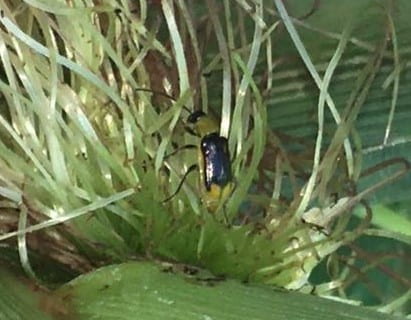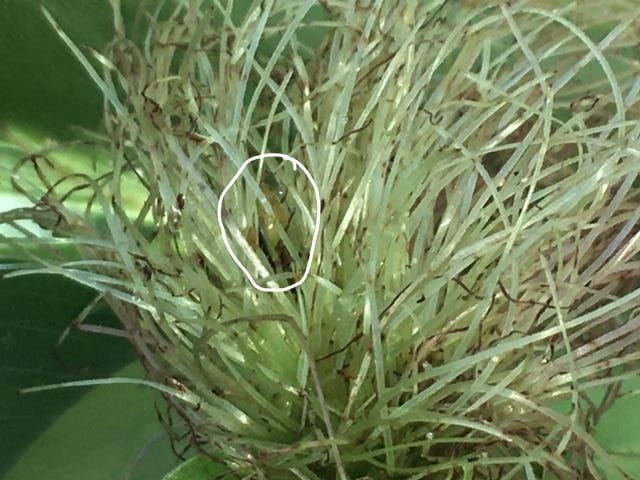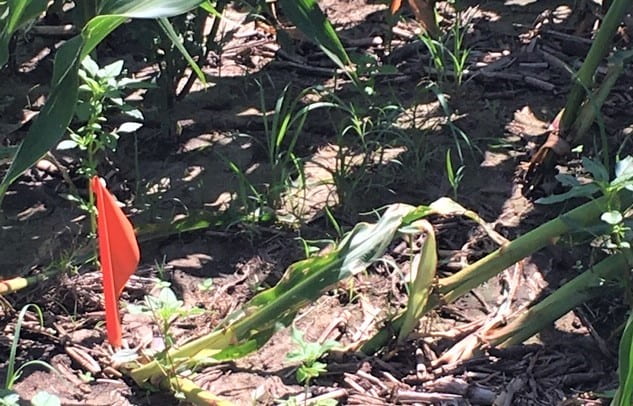–by Dr. Jeff Whitworth
Corn – adult western corn rootworm, corn earworm and fall armyworm
The first adult western corn rootworms (WCRW) (fig. 1) were detected on 5 July, 2020, in north central Kansas. Since this first emergence there has been considerably more emergence, to the point that there are several areas of north central Kansas that are now concerned about silk clippings by these adults. WCRW adults spend much of their time in the early morning, and then again toward evening, feeding on silks (fig. 2)—thus, shown here in a position that they are commonly found in while feeding on silks. They may spend much of the middle, warmer, part of the day in more shaded areas, i.e., behind leaf collars, etc. Figure 3 shows typical “goosenecking”, from the previous root feeding, which is now completed, by the larval stage of the WCRW.
Figure 1: Adult Western Corn Rootworm (WCRW) ( Cody Wyckoff)
Figure 2: WCRW in position that they are commonly found while feeding on silk (Cody Wyckoff)
Figure 3: Goosenecked corn (Cody Wyckoff)
There is also much corn earworm and fall armyworm activity in corn fields that are just now, and have just recently, started silking. The larvae (fig. 4) observed around north central Kansas will probably feed for about another 2 weeks, then, pupate in the soil, emerge as adults which mate, and start depositing eggs. These eggs will most likely be deposited in late planted corn, or sorghum (between flowering and soft dough) and/ or soybeans.
Figure 4: Larva feeding on corn (Cody Wyckoff)



